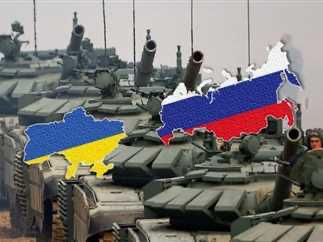THE TANKS OF SPRING IN THE UKRAINIAN THEATER

By General Monzer El Ayoubi
Translation: Dr. Pierre A. Sarkis

Last but not least, and perhaps yes indefinitely, and despite all the European and international pressures exerted mainly by the United States of America, Germany remained reticent about supporting the Ukrainian Army with Leopard 2 battle tanks. It did not object at once to Poland’s announcement of this step without waiting for Berlin’s approval, contrary to signed contracts that prevent the importer from supplying it to a third country.
On the other hand, the past week witnessed a state of Western confusion over the need to meet Kiev’s request in terms of supplying attack tanks, and serious differences emerged over the option of adopting any of the three: the British Challenger 2- the American M1A1 Abrams- the German Leopard 2, without ignoring the French AMX-56 Le Clerc, based also on 3 advantages “specifications in terms of combat efficiency, proportionality to the nature of the battlefield, ease of the forces absorbing the training in a short time” before next Spring, in anticipation of what is expected from the preparation of the Russian military command to launch its comprehensive offensive ground operation.
Simultaneously, on the morning of Thursday, 19 January 2023, the new German Minister of Defense Boris Pistorius received his appointment decree from German President Frank-Walter Steinmeier at the Bellevue Presidential Palace in the capital, Berlin, and former Defense Minister Christine Lambrecht received the document of termination of her duties after she submitted her resignation earlier to German Chancellor Olaf Scholz. Next, 24 hours before the meeting of defense ministers of the Western Alliance to support Ukraine in Ramstein, the new minister was sworn in, in the German Parliament “Bundestag”. He followed his meeting with US Secretary of Defense Lloyd Austin in Berlin. The British newspaper The Guardian, reported that Austin met Pistorius a few hours after the latter was sworn in. At the meeting, Austin stressed that Germany remains “one of the most important allies” of the United States. He thanked the German Government for “everything it has done to strengthen Ukraine’s self-defense against the Russian attack.” Pistorius said his country was “ready to support Ukraine in its struggle for freedom, sovereignty and territorial independence, adding that “Berlin stands shoulder to shoulder with its allies.” Reports indicate that German Prime Minister Olaf Scholz will not give the green light to send Leopard 2 tanks unless US President Joe Biden agrees to supply the Ukrainian side with Abrams American tanks.
In a related context, a number of reasons push Ukraine to demand the supply of the German Leopard tank, as military experts believe that its entry into the battle against the Armata tank (comprehensive combat platform), the backbone of the Russian ground forces, will make a real difference on the battlefields in the coming period. Dr. Jack Watling, a military researcher at the Royal United Services Institute, summarizes the characteristics of the Leopard: “It is a modern, protected main battle tank with good sensors and detection system, and is designed in a way that allows it to be maintained by army recruits, and therefore, easier to continue fighting than some other NATO designs.” By extension, the Website Gazeta.ru stated that Germany is currently working on producing the new generation of Leopard tanks, capable of dealing efficiently with the Russian Armata T-14 combat machine, as it was introduced during the Victory Day Celebration in Moscow, and which is built on a global platform that contains a crew protection capsule and is equipped with advanced AESA radar with an Active Protective System, capable of intercepting anti-tank missiles.
In the race against time, the Ukrainian military leadership is seeking to build new military units and equip them with Western aid, and has announced the need for about 300 German Leopard main battle tanks, in addition to several hundred American Bradley Fighting M2/M3 armored infantry vehicles. It is clear that this armored support will allow Ukrainian forces to move from the frontline defense phase to the Blitzkrieg, or “shock tactics”, aimed at breaking the formations of Russian attacking units that adopted the Scorched Earth Strategy.
In context, there is no doubt that the Russian military operation in Ukraine marked a major turning point in the security policy and military strategy of the German Government, and geopolitical changes prompted a decision (for the first time after World War II) to make the German Army capable of deterrence and defense, while providing it with advanced equipment and more efficient weapons. German President Frank-Walter Steinmeier said Germany was not at war, but noted that an era of headwinds would begin for his country, saying: “In this environment of new threats, we have to react to any threats that target us.” From these standpoints, and according to German defense sources, the new minister known for his toughness, calm mind and perseverance should guide the project of modernizing the German Army and oversee the expansion of arms shipments to Ukraine.
In contrast, in the face of all this arms support from NATO and the United States, Moscow has pushed more of its anti-armor weapons to the battlefield (self-propelled missiles K114 Shturm 9, portable missile systems K111 Fagot 9, and RPG 7 rocket systems) which constitute an integrated system in range and destructive capability, as the main deterrent against both light and heavy armored vehicles which are increasingly dangerous in urban warfare. In addition, some 150,000 Russian soldiers who have been recruited and trained since last fall, will also be integrated into the mechanized infantry brigades.
Finally, in light of the mutual military and logistical preparations, not forgetting the expectations of Russian Prime Minister Medvedev at the beginning of this year, and according to CNN, “Ukraine wants to take the initiative before Russia strengthens its tactical lines and battalions”, it seems that its war staff considers German and American armored vehicles the key to decisiveness against the Russian Army. As Western Allies are showing confidence in Ukraine’s chances of victory in the fierce war, nature is often on the side of the Russian Army, as Moscow’s snow contributed to the defeat of Nazi forces at its gates during World War II. Would the density of the Ukrainian Spring mud become the drowning and fatal blow to the Western heavy armored units, which will become easy targets for RPG launchers?
————-
Beirut, 24/1/2023
Scholar in Security and Strategic Affairs

